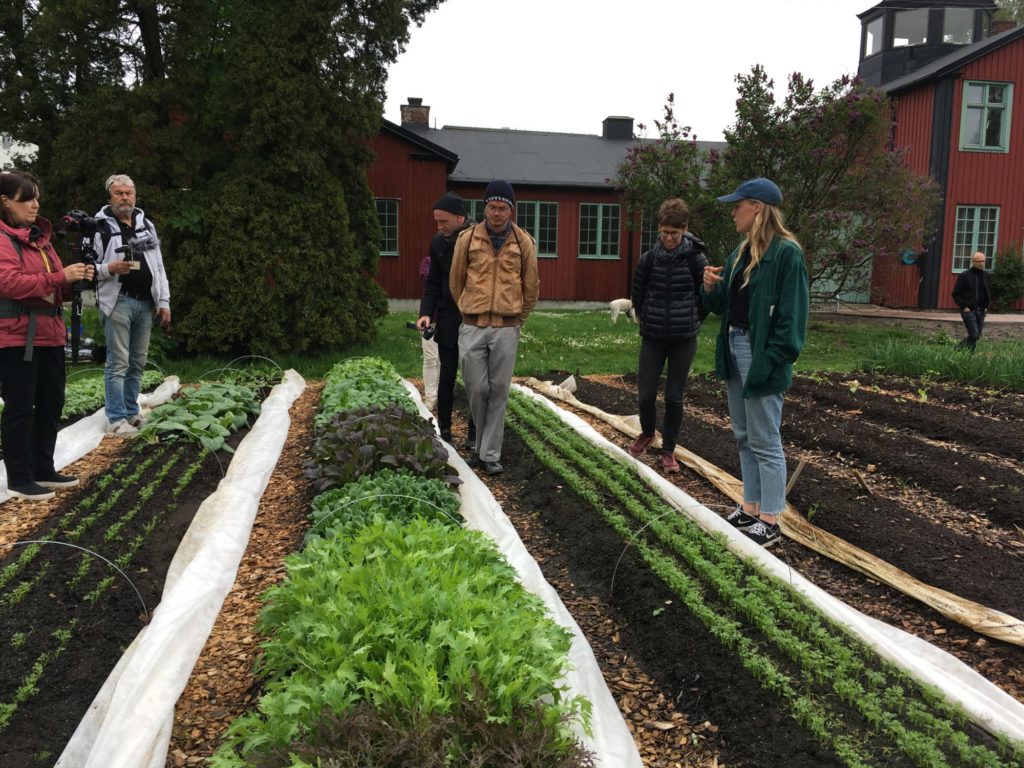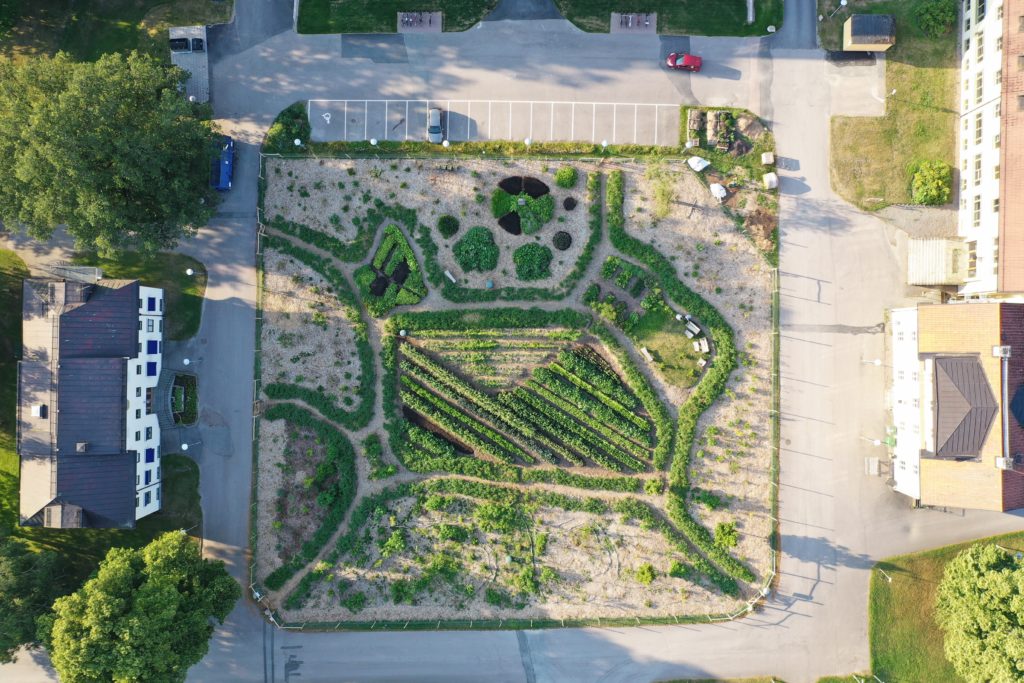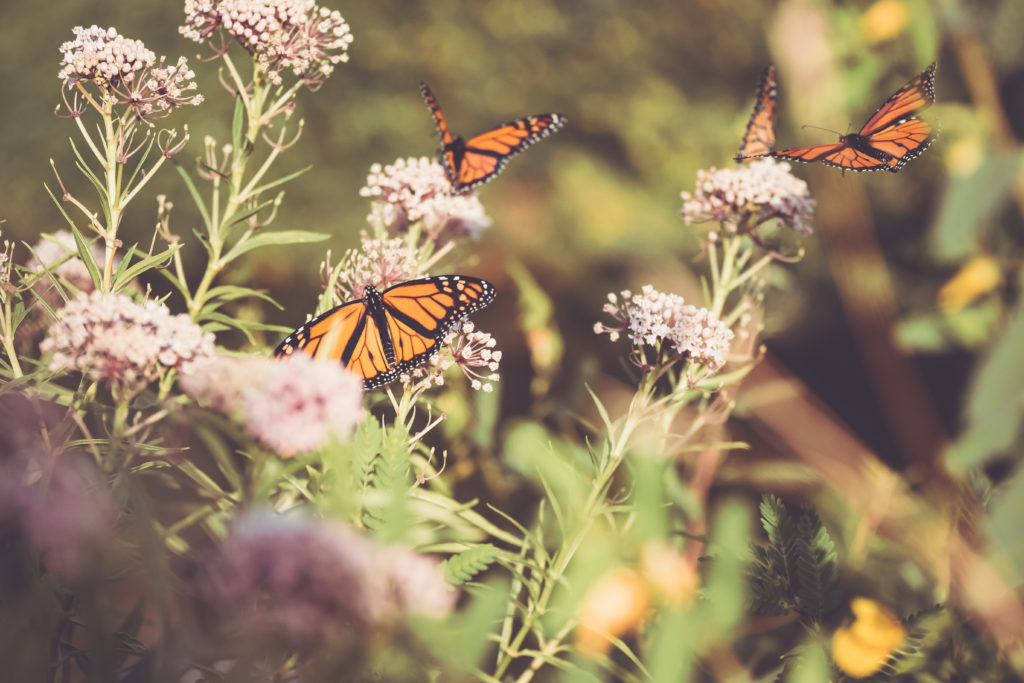News
Your garden matters – for biodiversity and climate adaptation

Today, May 22, is Biodiversity Day. So to celebrate the day today we thought we’d talk about how you and I can create our own diversity gardens that also combat climate change and make us more resilient to the extreme weather we’ll be expecting in say 50 years. How can we adapt our cities, villages and communities to a changing climate? Imagine it’s May 2073 and it’s been 30 degrees now and drought for weeks, not a drop of rain. However, some cities have adapted but not all. What does this future city and countryside look like? And what can we expect with 3-4 degrees higher temperatures on average in Sweden – maybe even higher if we don’t manage to keep global warming below 2 degrees? In this blog post, Jonathan tells what he takes away from the basic course and gives 5 solid tips on how you can cultivate for increased biodiversity. How to build a climate-smart diversity garden simply!
(The picture above is from a Urban Farming Safari we arranged on Biodiversity Day a couple of years ago)

Ultuna’s food park – picture from Ultuna Pemakultur on their cultivation at the SLU Campus in Ultuna – A good example of a climate-smart diversity garden where many of the tips we share below have been used as a starting point. Read more here
Climate change and biodiversity
Did you know that we in Sweden can count on 3-4 degrees higher temperatures on average – even if global warming is limited to 2 degrees? What does this mean and what can we do? Jonathan was recently on SMHI’s basic course on climate adaptation and there the message was clear. More greenery and “nature-based solutions” – such as cultivation, green roofs and carbon storage in agricultural land are all ways to both counteract the loss of biodiversity and adapt to a changing climate with extreme rains and droughts, heat waves, etc. The fact is that biodiversity and climate adaptation are very much connected – both in terms of the challenges and the solutions. And your cultivation, whether you cultivate in the city or in the countryside, is an important part of the solution for increased biodiversity and resistance to heat, drought and torrential rain – yes, even a carbon sink that can prevent climate change.

Slaktarens trädgård – The butcher’s garden – a farm on the former asphalt “dessert” close to Gamlestads torg (in central Gothenburg) that adds both biological diversity and increased climate adaptation with better management of rain, drought and heat in the city.. Read more here.
Three things I take with me from the course in Climate adaption
- Sweden’s climate will be much warmer than the global climate (if the global temperature increases by 2 degrees, it increases by 3 degrees or in some areas even 4 degrees in the northernmost part of Sweden)
- Climate adaptation and climate mitigation (adapting to and preventing climate change) must go hand in hand. It is not enough to just reduce emissions, if we stop emitting tomorrow, we need to continue adapting society to a warmer climate for the next hundred years. This adaptation takes time so we need to start now.
- The solutions that are most cost-effective are natural solutions such as greenery and nature-based solutions that fulfill many functions. It will not help to build walls around cities that are at risk of flooding, these will have to be replaced in time and the city may still have to be moved in the end.
Biodiversity day – 22 Maj
Let’s celebrate all gardens!
A lot of research has shown that gardens in and around cities and urban areas contribute a lot to higher biodiversity. A lawn and “ordinary park” comparatively does not have as much diversity as a garden plot or plot with flowers, trees, shrubs and crops. In addition, a vegetable farm or forest horticulture can create a net carbon sequestration if done correctly. Something that both strengthens life and diversity in the earth, and also contributes to slowing climate change at the same time as we adapt to a climate with more drought and torrential rain. More carbon in the soil means more humus which holds more water in both dry and wet periods and thus reduces the risk of flooding and drought (which are often linked and due to poor marine filtration and absorption in the soil). Building soil, loamy soil, is thus an important part of the solution to how we adapt our societies to a warmer climate – and we get higher diversity and carbon storage at the same time. Personally, I would like to see a shift to regenerative agriculture on large areas in Sweden, but apart from this, even the small patch has a great significance.
[Abbreviated quote from Swedish gardening profile John Taylor during the spring in an interview on SVT’s program Sverige (April 14).]“Gardening as a social engine in society is gigantic. There are millions of people who garden and yet it is considered a small hobby. We are responsible for food production, landscape care and a greater part of the biological diversity in society”
How to build a “climate smart” biodiversity garden:
Here are 5 tips from Jonathan – architect and community planner with specialization in cultivation and food production,
- Start digging where you stand:
Do you own a piece of land? Think about what you want with the surface. Perhaps you can invite more people to create your or someone else’s dream garden. Share farmable land on Grow Here if you want to find growers to take care of all or part of the garden or list an existing farm or garden if you are looking for someone who can help and be part of your garden dream or your cultivation initiative.
If you don’t own a piece of land/garden… Search among available cultivation areas and cultivations on Grow-Here.com/discover or ask the neighbor or the municipality, the BRF or those who take care of the green areas near you where you would like to grow. You don’t have to own the land to farm here, often the owners are happy if it is put to better use and can also have higher diversity, aesthetic values and withstand extreme weather better.
- Cultivate the soil, then the plants also thrive
It all starts with a healthy soil with a lot of soil (humus) which consists of 50% carbon, which can hold 20 times its weight in water and thus makes your garden able to withstand both drought and extreme rain. In addition, the humus content increases the food for all life in the soil, which provides food for all plants – which provides food for us. So build a healthy and humus-rich top soil and the plants will thrive in return. Regardless of whether you have sandy or clay soil, it will be “better” with more organic matter (mulch).
You can read more about how to convert grass into cultivation without digging here
- Grow the things you eat, things you enjoy – and what likes to grow there
– Grow what you eat – which vegetables, herbs, berries/fruits and perhaps perennials you don’t have to sow every year.
– Flowers you like to pick that can attract beneficial animals and look beautiful.
– Shrubs and trees that can provide fruit, flowers and both food/habitat for wild animals/insects.
– Co-planting: Dare to mix and combine edible and beautiful, and take advantage of the benefits of co-planting. More on that in this premium article. - Cultivate smart: Serial cultivation, pre-cultivation
– Serial gardening means that you use all free surfaces in time and space and pre-cultivate what you intended to plant so that it is ready just in time for the surface to become empty. A good tip is to make a cultivation plan to know what you need and when to fill all the gaps in the cultivation over the season.
More on that in our premium article on how to become self-sufficient in vegetables.– Pre-cultivate if you grow edible annual crops – get tips on when you grow what in our growing calendar for April and May.
You can also read more about cultivation in our previous blog post about cultivation indoors and outdoors. - Last but not least – Enjoy and dare to be lazy!
– Dare to be a lazy worm in the garden and don’t create more work for yourself than necessary. Lay down in the hammock or on the lawn and take in everything that happens. Notice how clever nature is at solving things you yourself thought you needed to solve.
– Enjoy observing what works well in which places and invest in what you get the most out of around what means something to you. Maybe it’s food, maybe a beautiful place, maybe just a chore that relaxes you.We have made a series of videos where we share more cultivation tips in brief with a small challenge you can try yourself. Here you can e.g. learn more about pre-cultivation, solar studies for vegetable garden placement, green fertilization, interplanting and much more. See the playlist on youtube and the first video via the link below:
I wish you all a nice spring and summer in the unusual May heat and good luck with your farming and gardening dreams and goals for this season!
Sunny greetings,
Jonathan Naraine
Architect, grower and food system designer
Co-founder, Grow Here platform
Planning architect, Skara municipality





